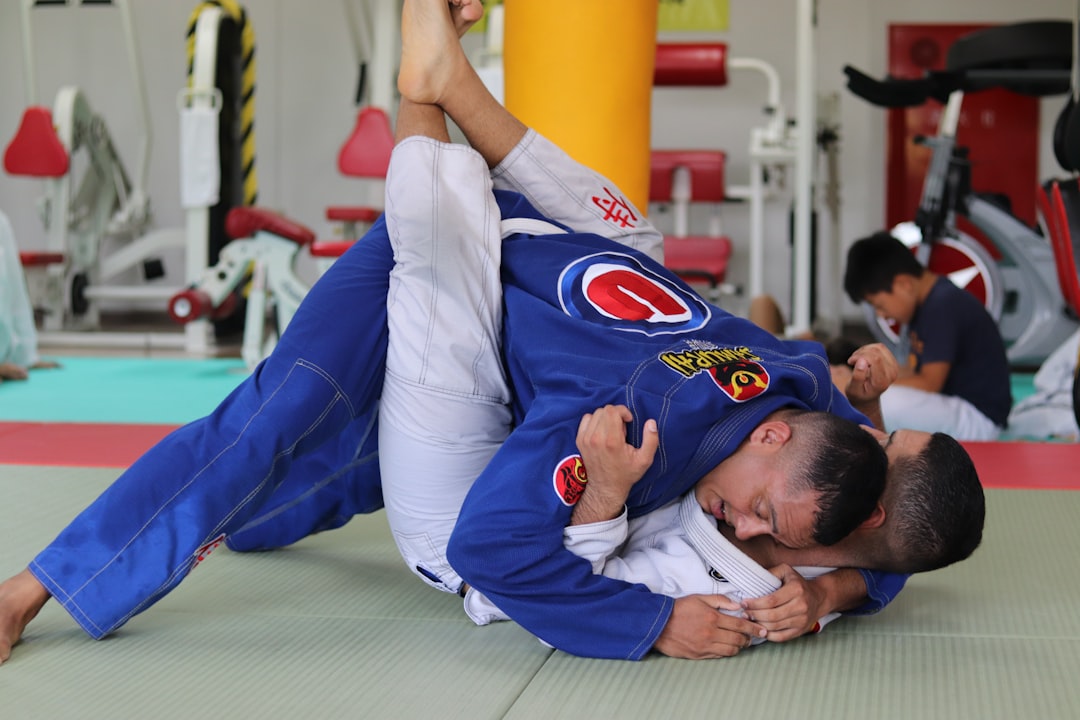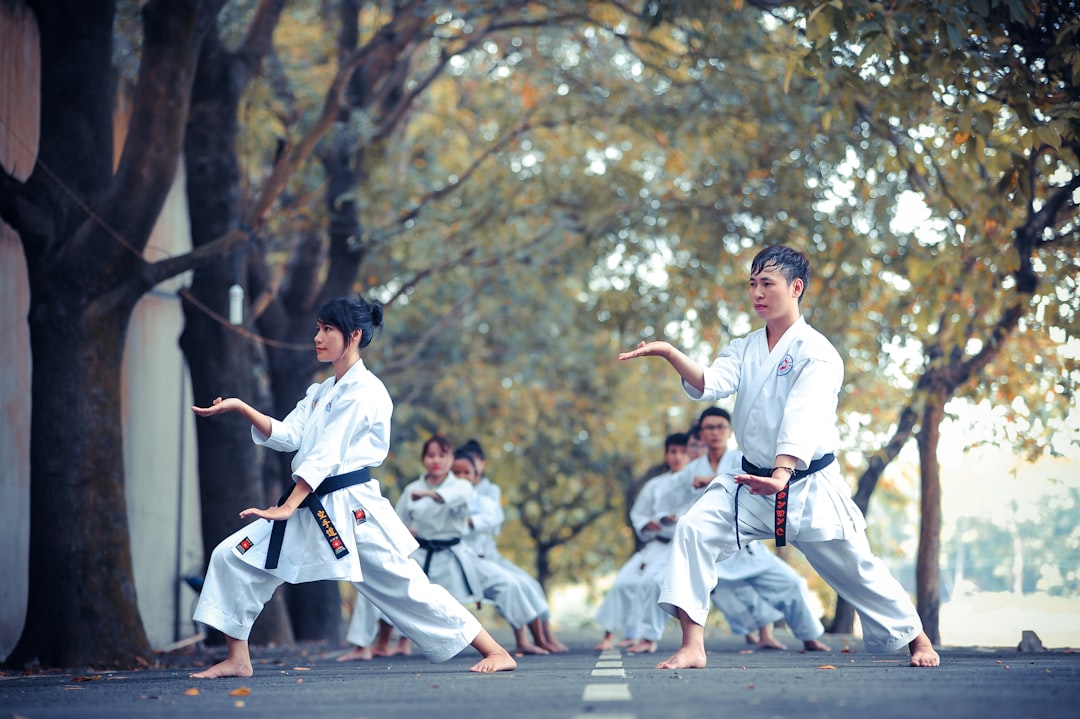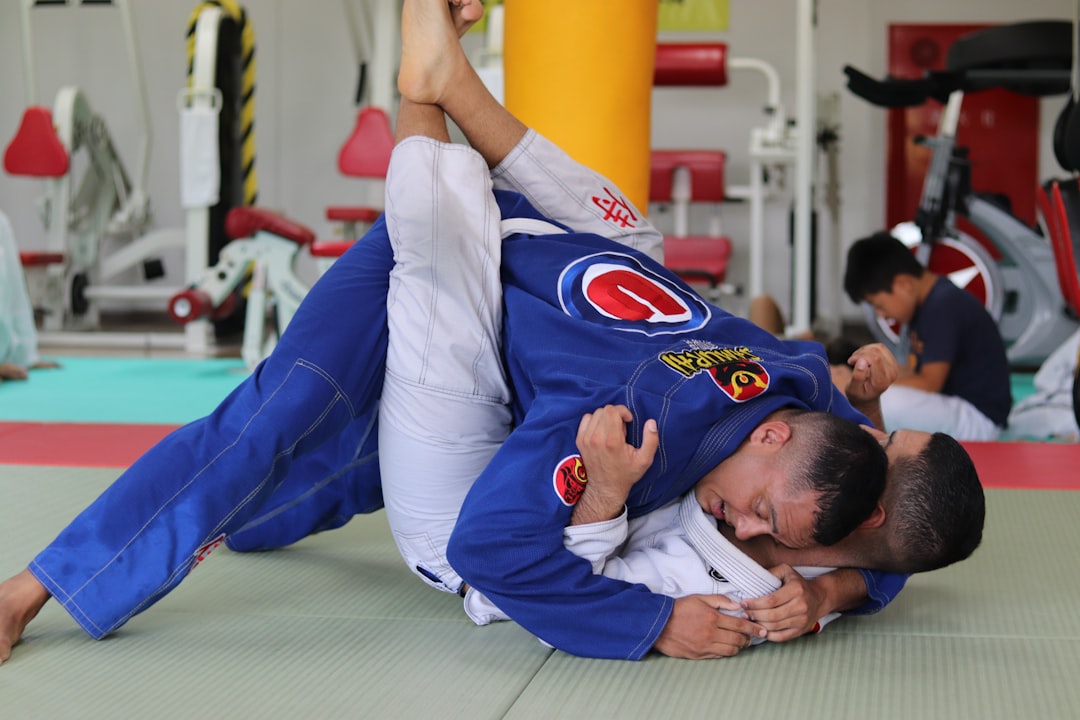When selecting a karate suit, or gi, for children engaging in sparring, it's crucial to opt for a model specifically designed with safety and mobility in mind. An effective sparring gi should be made of durable, lightweight material with targeted reinforcements at the elbows, knees, and chest for protection during contact exercises. The fit must strike an optimal balance between supporting agility and preventing minor injuries without being restrictive. It's also important to choose a suit that allows full range of motion, with the jacket fitting from neck to wrists and pants hemmed appropriately to avoid dragging or riding up during kicks. Consider your child's growth to ensure the suit has some room for expansion but isn't too large. Look for adjustable features like belt loops or velcro closures that can be modified as they grow. The suit should also be constructed from a durable yet breathable fabric to endure karate training while maintaining comfort. By adhering to these guidelines and considering the specific protective features of sparring gis, you can find a karate suit that maximizes safety and performance for your child's martial arts practice. Remember to consider both the traditional cotton and modern synthetic options available, as well as the lining and design elements that contribute to the suit's functionality and comfort. Opting for a reputable brand like Shock Doctor or Century, which offers specialized children's karate suits with reinforced areas for competition, will help your child excel in their martial arts journey.
When introducing your child to the dynamic world of karate sparring, ensuring they have the right equipment is paramount. A well-fitted karate suit, also known as a sparring gi, not only enhances their performance but also promotes safety and comfort during practice and competition. This article provides a comprehensive guide on how to measure your child for a karate suit name, detailing the key considerations and offering a step-by-step measurement process tailored for young sparring enthusiasts. By selecting the appropriate size and style from the various karate suit name options available, you’ll equip your child with confidence and readiness for their martial arts journey.
- Understanding Kids Karate Sparring Equipment: The Role of the Karate Suit
- Key Considerations for Measuring Your Child for a Karate Suit
- Step-by-Step Guide to Properly Measure Your Child for a Sparring Gi
- Selecting the Right Size and Style: Karate Suit Options for Children's Sparring
Understanding Kids Karate Sparring Equipment: The Role of the Karate Suit

When outfitting children for karate sparring, selecting the appropriate karate suit, also known as a gi or do-gi, is crucial. Unlike traditional gis used in regular training, karate suits for sparring are designed with safety and mobility in mind. These specially tailored gis are crafted to minimize the risk of injury during sparring by offering a balance of protection and flexibility. Do kids need a specific type of karate suit for sparring? Absolutely, as the design of a karate suit name for sparring differs from that of a standard gi, incorporating features that are conducive to the dynamic nature of sparring exercises. The karate suit name typically features reinforced areas and a more snug fit to allow for better control and movement while still providing a layer of protection against scrapes and bruises. What are the key features to look for in a karate suit for sparring? It’s important to seek out a suit that is durable, lightweight, and has strategic reinforcements in areas prone to contact, such as the elbows, knees, and chest. Additionally, the fit should be tight enough to not hinder movements but not so tight as to restrict blood flow or cause discomfort during intense sparring sessions. The right karate suit name can make a significant difference in a child’s ability to execute techniques with precision while maintaining a high level of safety.
Key Considerations for Measuring Your Child for a Karate Suit

When measuring your child for a karate suit, it’s crucial to consider the fit and flexibility that will allow them to move comfortably during practice or sparring. The size of the suit should not hinder their range of motion but provide enough room for ease of movement. Ensure the suit is snug enough to stay in place without being restrictive; this ensures that your child can execute various karate moves with agility and precision. The jacket length should extend from the base of the neck, down to the wrist, allowing for a full range of arm motion. Similarly, the pants must be hemmed appropriately so they don’t drag on the ground or ride up during kicks. It’s important to account for growth spurts; select a size that provides some room for expansion over time without being too large. Does the suit have adjustable features? Are there belt loops or velcro closures that can be tightened as your child grows into their gi? Ensuring these details will guarantee that the karate suit remains fitting and functional throughout your child’s development in the martial arts. Is the suit made of a durable fabric that can withstand the rigors of training while still allowing for breathability and comfort? Confirming these aspects will ensure that the karate suit is both resilient and comfortable for your child during intense training sessions.
Step-by-Step Guide to Properly Measure Your Child for a Sparring Gi

When outfitting your child for a karate suit, or sparring gi, it’s crucial to ensure a proper fit for both comfort and safety during practice and sparring. A well-fitted gi allows for ease of movement and doesn’t hinder the wearer’s range of motion. To measure your child accurately, start by noting their height and weight, as these are foundational for determining the correct size. Does your child have a measured height and weight? Record these figures, as they will serve as a starting point for selecting the right gi size.
Next, consider the specific requirements of sparring gis. These often include additional padding and reinforcements in areas that will be subject to contact during practice. With your child standing comfortably, measure from the base of the neck, down the spine to the mid-back, across the shoulders, and then to the wrist. This will help determine the length and sleeve length needed for the gi. Does the gi extend to the wrist and cover the back adequately? Ensure that the gi is not too tight or too loose. It should allow for a full range of motion without being restrictive. Additionally, check for the presence of pre-existing padding in areas like the elbows, shoulders, and chest, which are common in sparring gis. Are these padded areas accounted for in the gi’s design? If not, consider whether custom padding will be necessary to ensure your child’s safety during sparring sessions. Remember to also look for gis with reinforced knees and seat, as these areas experience significant wear and tear during sparring. By following these steps, you can select a karate suit that fits your child perfectly, offering both the protection and flexibility they need to practice safely and effectively.
Selecting the Right Size and Style: Karate Suit Options for Children's Sparring

When outfitting your child for karate sparring, selecting the appropriate karate suit, also known as a gi, is crucial for both performance and safety. The right size ensures freedom of movement, which is essential for effective technique execution during sparring sessions. For children, a well-fitted gi should not be too tight, restricting their movements, nor too loose, causing the garment to catch on opponents’ gear or drag on the mat. When selecting a gi, consider the style that best suits your child’s needs. Are they preparing for kumite (sparring) or kata (forms)? The choice between a traditional cotton or hemp karate suit and a modern synthetic version can impact comfort, durability, and ease of movement. For example, a synthetic gi might offer stretch materials that allow for greater range of motion. What’s more, certain brands like Shock Doctor or Century produce specialized kids’ karate suits designed specifically for sparring, featuring reinforced areas to withstand the rigors of competition. How do these options stack up against each other in terms of breathability and flexibility? A cotton gi might provide a traditional feel but could be less breathable than its synthetic counterpart. Does your child prefer the lightweight and quick-dry properties of synthetic materials, or are they more inclined towards the classic cotton touch? The answer to this will guide you towards the most suitable karate suit for your child’s sparring needs.
In terms of style, karate suits come in various cuts and fits to cater to different body types and preferences. For instance, a children’s karate suit designed for sparring might have a shorter hemline for easier movement and less fabric to catch on the opponent’s limbs. Additionally, some brands like Meijin offer gis with pre-bored belt loops, which is a feature that sparring participants will find particularly useful. The jacket’s design, whether it has a full or partial lining, can also affect performance; a fully lined jacket may offer more protection but could be less airy compared to a partially lined one. What’s the right balance between protection and comfort for your child? These are the considerations you’ll need to weigh when choosing the best karate suit for children’s sparring. Rest assured, with careful selection, the right gi will provide your child with the confidence and mobility needed to excel in their martial arts training.
When outfitting your child for kids karate sparring, selecting the appropriate karate suit, or ‘gi,’ is paramount. This article has outlined the essential aspects of measuring a child for a sparring gi, emphasizing the need for a fit that balances comfort with functionality. By understanding the role of the karate suit and adhering to the step-by-step guide provided, you can ensure your child’s gi accommodates their movements without hindrance. Various karate suit name options cater to different styles and sizes, ensuring every young sparring enthusiast finds their ideal match. With these considerations in mind, your child will be well-equipped for safe and effective training in the art of karate.
